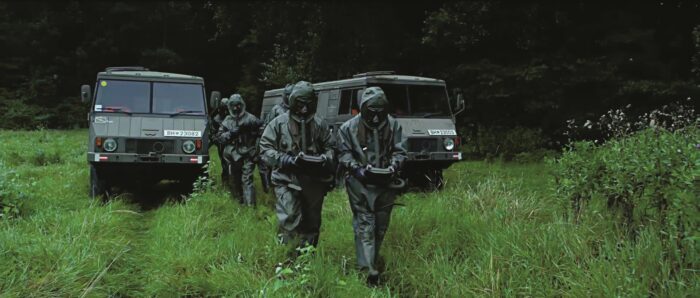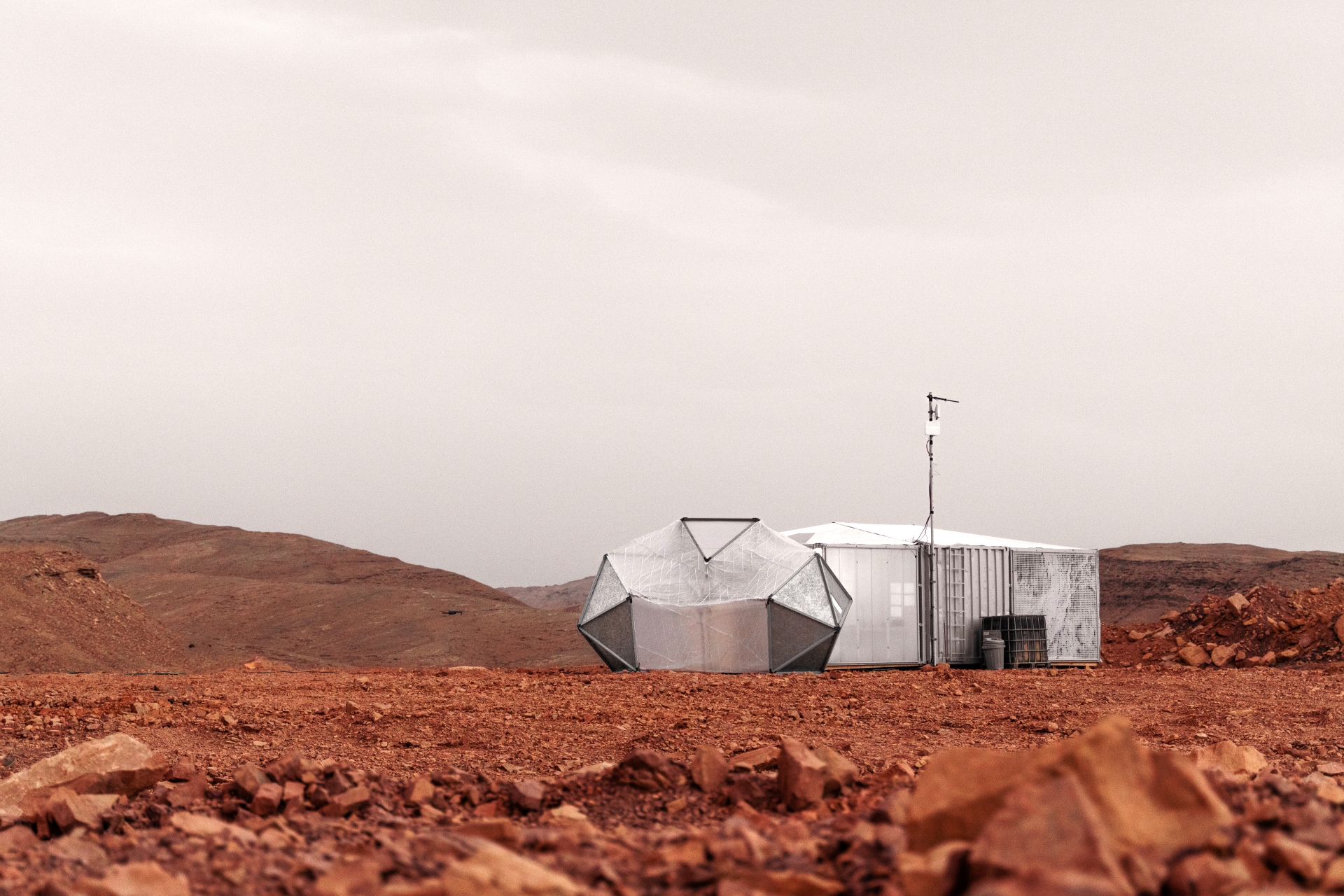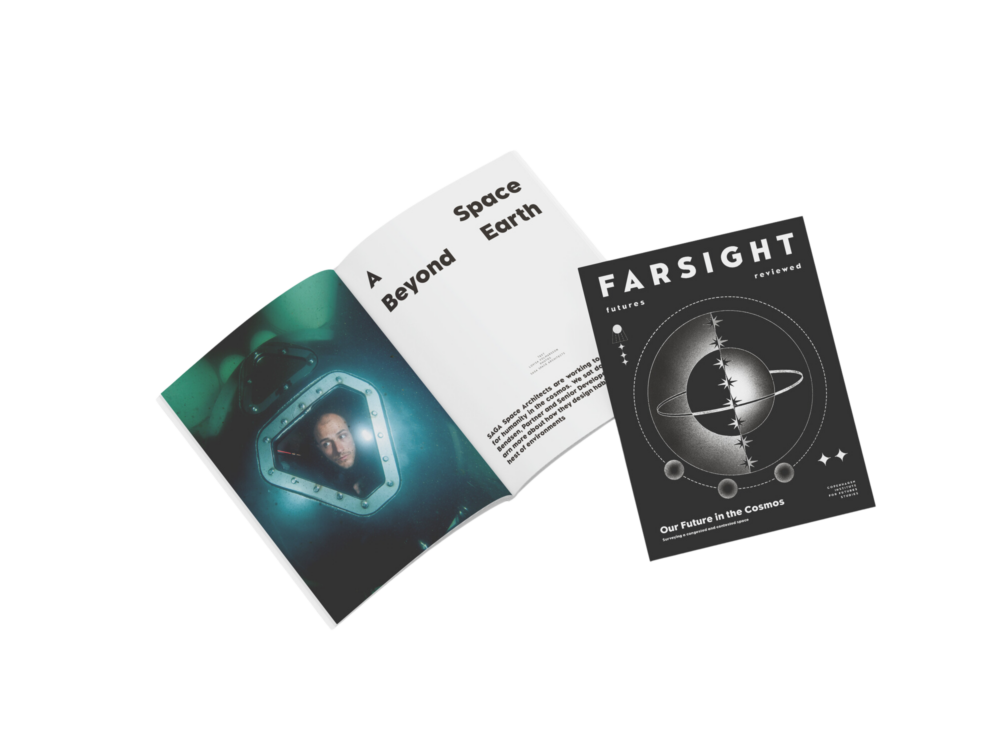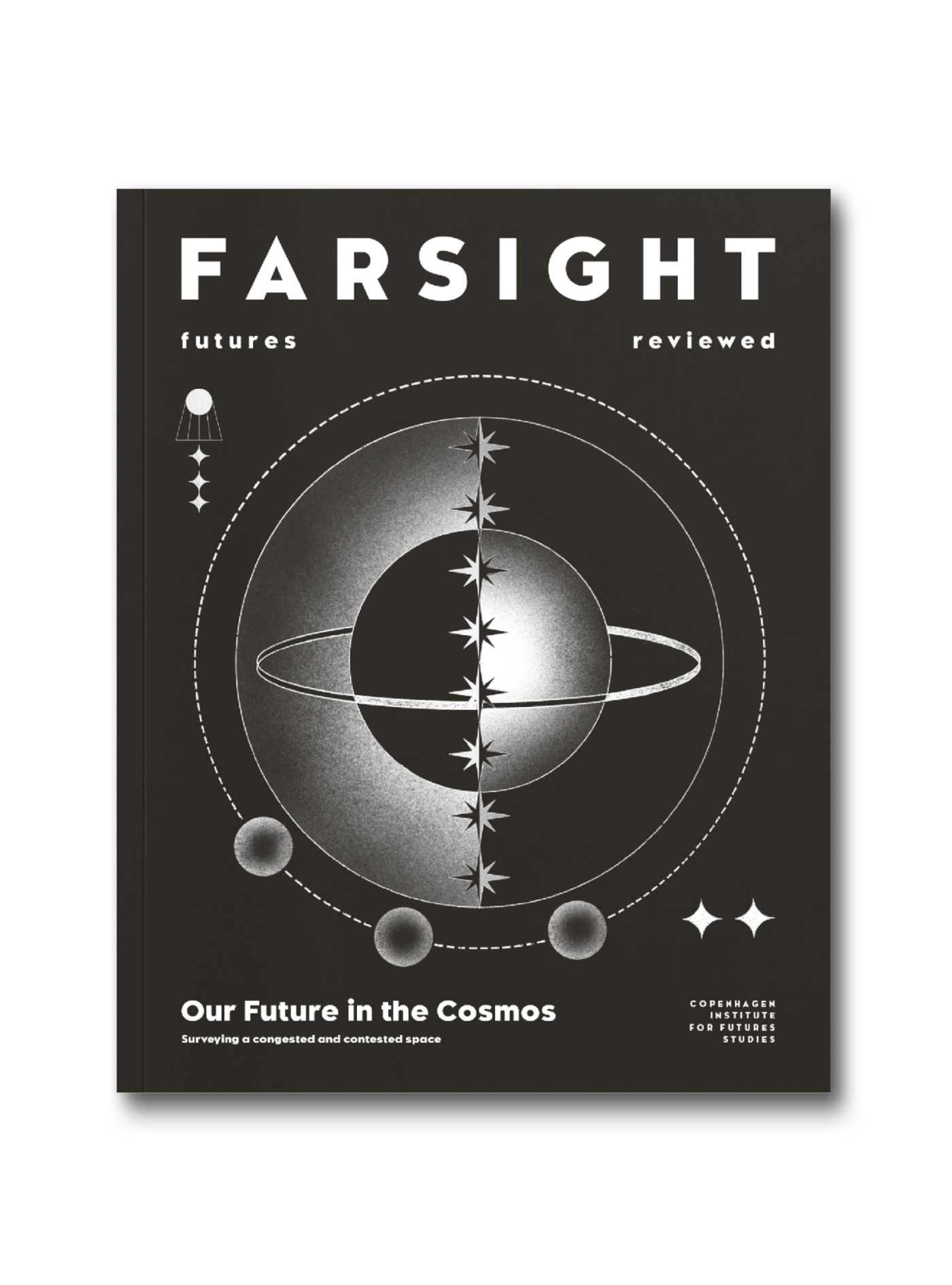
In turn, we use cookies to measure and obtain statistical data about the navigation of the users. You can configure and accept the use of the cookies, and modify your consent options, at any time.

A Space Beyond Earth
An interview with Marius Bendsen, Senior Developer & Partner at SAGA Space Architects.
Image: SAGA Space Architects
Imagine a future, perhaps a distant one, where humankind has become a multiplanetary species. What would life be like beyond Earth? What parts of our culture, values, and traditions have we brought with us? Is the environment familiar to us, perhaps mimicking the light, textures, and smells found on our home planet? What would be the architecture be like?
The theory and practice of the novel field of space architecture was first outlined in 2002, when the Millenium Charter was drafted at the World Space Congress. The charter, which defined space architecture as the theory and practice of designing and building inhabited environments for outer space, outlined the discipline’s purpose as forging harmony around the human system, balancing culture, biology, planetary knowledge, and technology in counterpoint to the unknowable.

Broaden your horizons with a Futures Membership. Stay updated on key trends and developments through receiving quarterly issues of FARSIGHT, live Futures Seminars with futurists, training, and discounts on our courses.
become a futures memberDesigning with the unknowable in mind. How exactly is this done? To find an answer, I met up with Marius Bendsen, Senior Developer & Partner at SAGA Space Architects. Tucked away in an industrial area in the southern part of Copenhagen, SAGA’s design practice rests on the notion of making the cosmos liveable for humans in a way that doesn’t compromise the need for mental wellbeing and social sustainability.
“Looking back, space has been greatly influenced by the field of engineering, and the aim has been to enable humans to survive in space,” Bendsen explains. “The astronauts who have gone there have often come from similar backgrounds, with many of them being former fighter pilots. But now, with space becoming open to a more diverse set of individuals and actors, there is more to it than just surviving in a small metal structure.”
To Bendsen, the answer to that question – of how to design for the unknowable in mind – is simple, even though the execution may be more complex: take something we already know well from life on this planet and bring it with us.
“In our practice we take a lot of inspiration from Earth and embed it in the technologies and structures we design and make,” Bendsen says. “We do this because we want to bring the nature of Earth with us into space.”
SAGA calls this approach Terra-Tech, a term that is meant to emphasise the potential of technology for providing solutions like those found on Earth while also retaining a respect for humanity’s biological, social, and cultural heritage. For SAGA, nature often is the starting point of the design process, with technology being a tool used to mimic or enhance natural properties rather than dictating the direction itself.
An illustrative example of this approach is their project Circadian Light, which is currently being tested at the International Space Station some 400km above Earth. It is a device designed to aid humans in extreme environments by using artificial changes in light to balance the human circadian rhythm, meaning the physical, mental, and behavioural changes that follow a 24-hour cycle.
“We know how important sleep is for us as humans, yet when you are at the International Space Station there are 16 sunrises and sunsets during a day,” Bendsen explains. “There is a need for an artificial light, and preferably one that takes inspiration from Earth and nature – our own habitat.”
The light panel mimics an Earth sunrise with red lights, transitions into daytime with a blue light, and then transforms back into a red light to simulate a sunset. These rhythmic changes to colour and radiance help make sure our bodies produce cortisol in the morning and melatonin in the afternoon, Bendsen explains. Being exposed to light at night or darkness in the morning, for example, can block the production of these chemicals in the brain, which can interfere with our sleep and energy levels.
Similarly, SAGA’s LUNARK project relies on patterns from nature that are mimicked in artificial environments. The design of the deployable Moon habitat, unfolding like a piece of origami, was inspired by the structure seen in a budding leaf as it unravels. It’s built in a way that ensures that temperature, radiation, and oxygen levels are within a range that is comfortable for humans, allowing its two inhabitants to dwell in relative contentment even in the harshest of conditions. LUNARK’s design was tested by SAGA architects Sebastian Aristotelis and Karl-Johan Sørensen in 2020 during a three-month long mission to the Arctic, in an environment that offers -41°C wind chill, irregular sun hours, complete isolation, and the ever-looming threats of cabin fever, frostbite, muscle atrophy and even other hostile ‘alien’ beings (in this case polar bears). Despite the challenges posed by the extreme conditions, the goal of LUNARK was to create a habitat that felt like a home rather than merely being a ‘survival machine’ – a place where astronauts spending a prolonged period wouldn’t wither away from the lack of sensory stimulation and connection to nature.

Explore the world of tomorrow with handpicked articles by signing up to our monthly newsletter.
sign up hereIndeed, although the direct threats to survival posed by space environments are severe, the lack of stimuli and the negative mental effects of monotony are just as much of an obstacle for long-term voyages in the cosmos. Here, too, inspiration from nature can offer ways to solve tricky design problems. As part of an exhibition at the Danish Architecture Center in Copenhagen, SAGA designed a ‘season simulator’ as a way for astronauts to experience not just the changes between night and day, but between the different seasons of the year as well.
“The experience of a season, winter for instance, includes not just temperature and light, but scent and many other sensory impressions as well. Sometime in the future, we may have a full sensual simulator in space that also lets you experience changing weather. Simulating a day when it’s cloudy and raining would mean playing the sound of rain and synthesising the smell of fall, so that all senses are activated. The idea is to recreate the same experiences we have on Earth in a lifelike way.”
If the artificial environments in space are not somehow made inviting, friendly, and a place where inhabitants can relax, then they will start to worry and stress, Bendsen says. And there’s still much work to do. “We know a great deal about how to survive in space, but the mental toll space travel can take on humans is an aspect that is underexplored.”
Space is both physically and mentally demanding. So why go there at all? And what makes designing conceptual habitats for its extreme environments so appealing? To Bendsen, at least part of the answer is the sense of adventure and discovery involved.
“There are of course still many things left to learn from and about Earth, but few big explorations and grand voyages,” Bendsen says. “We [at SAGA] want humanity to go to space. But we also want the people who go there to take some of the things with them that make us human. We’ve been on Earth for hundreds of thousands of years, and our bodies are made to live in the environments found here. It’s only natural that we bring parts of those environments with us.”
It’s easy to draw parallels between the fascination with space exploration and humankinds’ ancient drive to explore and settle new lands here on Earth, which has often resulted the displacement of others and the exploitation of nature. In our quest to build habitats on strange new worlds, can we do so in a way that doesn’t perpetuate the legacy of colonisation and destruction so prevalent in history? Certainly, the language often used to describe space travel carries a lot of baggage with it and comes replete with references to frontiers, conquests, and extraction.
To Bendsen, however, the opportunity to start anew with a clean slate is a special thing. “Hopefully we can design and build in a way that avoids the mistakes made on Earth, while still using the knowledge we have accumulated. If we were to go somewhere else where the same systems aren’t in place, hopefully we approach it in an entirely different way that ensures that we do not exploit the environment – or other living beings for that matter.”
In this case too, natural environments – particularly those found on other worlds – can teach us about which mistakes to avoid. Studying the atmospheres of other planets like Mars or Venus, for example, has helped us understand what dangers arise when environments are damaged – such as through the greenhouse effect or the weakening of the ozone layer. Bendsen emphasises the importance of bringing this kind of knowledge home, stressing that “the investment we put into space today should be used to develop things that adds value for everyone.”
The boundaries of what a space beyond Earth could be is currently limited and defined by the technical demands and constraints of extreme environments which influence what is possible to design and build. Any misstep can easily prove disastrous, which means that the emphasis has so far been on surviving rather than living, Bendsen says. Yet when it comes to the future evolution of space architecture, he remains optimistic as well. “While technology often will be the big hurdle, our ability to make space survivable through technical means is growing. Now we need to figure out how to make the same make space liveable.”
In just a decade, there may be permanent human habitats on the Moon. In the meantime, SAGA are busy here on Earth preparing for the day when these extraterrestrial homes become a reality. At that point, we will hopefully not only have the means to get by in space, but to thrive there as well

This is an article from FARSIGHT:
Our Future in the Cosmos
Grab a copy here